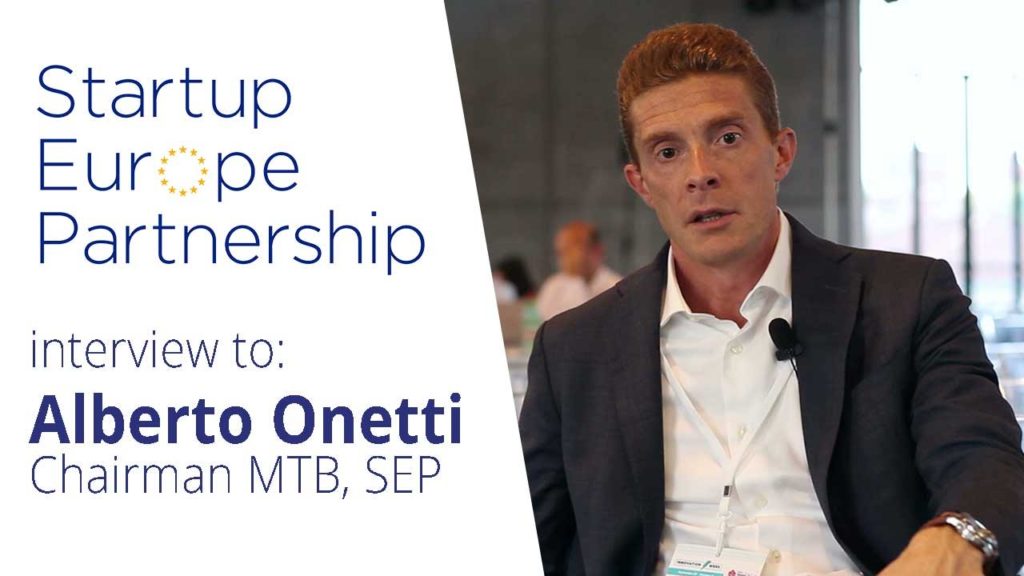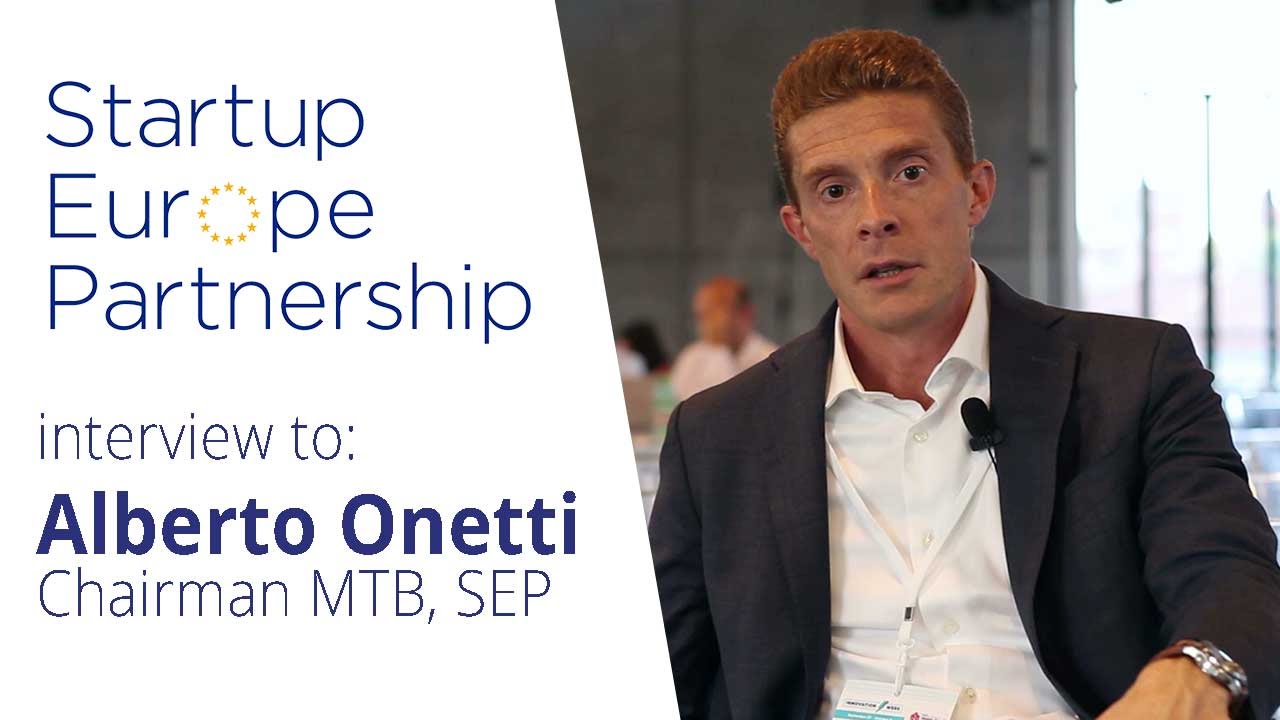An effective innovation strategy is a major edge for all enterprises, but it could be very different in different industries or for different challenges. How do great companies innovate and thrive in a fast-changing world?
We just have had the pleasure to interview the Chairman and President of Mind The Bridge (MTB) Alberto Onetti — a seasoned serial entrepreneur with a background in corporate strategy and finance, and a professor of Entrepreneurship and Management at the University of Insubria. Since 2009, he has become the Chairman of Mind the Bridge (MTB), a global organization with headquarters in San Francisco and offices in Barcelona, London, Milan, and Berlin, that provides innovation advisory services working at the intersection between Startups and Corporates. In 2014, he was selected by European Commission to help drive on behalf of MTB the Startup Europe Partnership (SEP), the first integrated open innovation platform to support the growth and sustainability of European companies. He regularly blogs on #openinnovation and #intraprenuership, mostly on LinkedIn, beyond being also quite active on Twitter, Instagram (@aonetti), Facebook, and Telegram.

This is the first post of our interview series with Digital Innovation Leaders. Here is a brief of the interview.
Could you share with us the history of Mind the Bridge?
Mind the Bridge was founded in 2007 in Silicon Valley by my partner in crime Marco Marinucci during his time at Google. The original idea was to create a landing platform for Silicon Valley for international startups and entrepreneurs. A few years later (2013) we noticed that there was a bigger gap to be bridged: connecting the world of startups to large corporations, i.e. what today is known as “open innovation”. Then we decided to shift the focus of Mind the Bridge activities on bridging the most interesting startups and scale-ups worldwide to large and mid-sized corporations. That’s what we do today, at a global level.
What problems do Mind the Bridge solve or what value(s) does it bring?
Currently, we offer our corporate customers a wide range of services that range from innovation advisory to market research and technology scouting.
On the advisory side, thanks to our experience of working with most of the world’s innovation leaders from multiple industries and countries, we support corporates to design/reshape/fine-tune their open innovation strategy and structures or specific areas (such as corporate accelerator, CVC, …). Some examples are an Oil&Gas Fortune company who asked us to run a dedicated in-depth assessment about the opportunity to launch their own corporate accelerator; and, one of the Big Tobaccos who commissioned us the design of their innovation organization structure (lines of reporting, processes, incentives, KPIs, …).
Additionally, we regularly sit with the top management of our customer companies to provide Landscape Analysis and Market Insights — the strategic directions competitors and international innovation leaders are taking.
On the scouting side, our open innovation advisors identify the innovation needs of our corporate clients (and their business units) and match them with the emerging startups and scaleups of the global market. Our team is able to make relevant matchings by combining startup experience and corporate world in-depth understanding. They leverage our proprietary database that – up-to-date – includes over 50 thousand startups from all over the world (roughly 10+ thousand from Europe, 10+ thousand from China, 20+ thousand from US, 10 thousand ROW) plus our long term relationships with 200+ VCs, accelerators, universities/tech transfer centers, startup associations and partners across the globe.
In the last four years we provided scouting services to 50+ corporates from all over the world and multiple industries. For some of them, we are also asked to follow-up the scouting and matching activities by supporting with our dedicated resources either for the negotiation process (organizing “beauty contest”, financial due diligence, price/impairment and terms negotiation, …) and/or the Pilot/POC implementation phase.
In the past decade, what are the major trends of corporate innovation and open innovation?
Open innovation is an evolving beast and often what was working just a few years ago doesn’t anymore. There are multiple trends that are clearly visible. Main ones being:
- Corporate accelerators. There are growing doubts about their efficacy. We see many corporates shutting down their own accelerators or downsizing efforts and budgets.
- CVCs. They are booming particularly among large companies (Fortune 500/Forbes 2000 like). Many of our customers are asking us to help them set-up their own venture arm (and designing the related investing strategy).
- Venture Builders. This is a very recent hot trend. We see a growing number of corporates that are trying to do it properly. Not easy. Since many attempts in the past have not proven to be successful (more on the incubation side). It is key to properly allocate the resources (both investment and people)
- More scaleups than startups. Corporates have learned that is more effective working with later-stage companies rather than early-stage startups. Consistently they have re-oriented their scouting efforts (plus their acceleration programs) in this direction.
What kind of companies really continuously prioritize and invest in their innovation programs? (examples, what do they do)
Innovation leaders are not slowing down innovation, rather accelerating. At the same time they are also reshaping the way they work with startups, abandoning “old” models (examples are corporate accelerators), innovating/adjusting others (e.g. CVCs introducing implementation managers to work with the parent’s business units) and experimenting new concepts (i.e. startup studios and venture builders).
Enel, BP, Shell, Telefonica, Robert Bosch, Engie, National Grid, ACCIONA, Nestlè are some reference cases here.
Other corporates should avoid to just replicate a model they see applied by others (joining an accelerator is a typical example), without checking whether these models have become obsolete. This means they skip the only advantage late movers have: learning from other’s mistakes and experience. At Mind the Bridge, we typically try to “fix this bug” by helping corporates start the innovation journey in a faster and more efficient way.
Could you share with us some important lessons learned AND best practices about open innovation?
As I mentioned in a recent interview, it is key for corporations to get the conditions right for properly scouting and executing innovation.
- Commitment. You need top-level buy-in to the innovation project. If the chief executive is not intimately involved, the project has little chance of getting traction.
- Maturity. Companies focus too much on early-stage startups, rather than working with scale-ups that can work much more productively.
- Internal vs. External. The startups are not integrated with business units. Innovation managers waste too much time scouting for startups at conferences, rather than walking the halls of their own business units to find out what they need.
- Culture. Corporates are so risk-averse. If one out of five ventures succeeds, you are doing very well in innovation. But a one in five success-rate is unacceptable to most companies.
- Time. Corporations don’t factor in time in the right way. They are slow to make decisions, they can take six months to decide on a pilot project, but then they are impatient, and if something does not produce results straight away they shut it down.
Barriers to innovation are most of the time internal rather than external. We help corporates put in place the right conditions and lower these barriers.
This requires most of the time some organizational adjustments plus actions to spread entrepreneurial/innovation culture inside the organization.
Can the return of investment in the open innovation program be measured and how?
While a few years ago the main goal of companies was to communicate their activities in support of innovation, targeting attention from the media and, generally, their startup-friendly-ness, today it is all about producing collaborations with startups that have an impact on the company’s EBITDA and creating measurable strategic value.
Return on innovation can be measured, though it is not easy to design a KPI system able to measure the impact on the P&L and EBITDA as well as the value creation produced for the company and its business units.
Innovation leaders are increasingly asking us at Mind the Bridge to help them in measuring their open innovation activities. Here we provide our clients with a full Open Innovation Assessment – which provides a way for companies to rate and benchmark their open innovation practices – that might lead to a detailed measurement of open innovation results (Revenue generated, Cost Savings, Churn Reduction) and strategic impact (contribution to strategic decisions, impact on cultural transformation, …). In certain cases we can also set-up a full Open Innovation Audit.
A company that is very advanced here is Wayra/Telefónica[1], who recently communicated the economic impact on their P&L generated by collaboration with startups.
In this year (2020), what are the major changes you see amid COVID-19? What suggestion will you give to enterprises now amid this uncertain time? (about innovation or digital transformation)
We are seeing some corporations slowing down innovation projects, but some are going ahead with business as usual. It really depends on the maturity of the organization. If you have a strong vision for where you want to take the business, you might even accelerate projects. Covid-19 has definitely accelerated some trends — many new people are being forced into understanding digital ways of working now. The need to innovate has become stronger than ever. Definitively it is not the time to slow down innovation and digital transformation.
[1] Refer to: Las ‘start-ups’ de Wayra y Telefónica facturan 32 millones de euros
